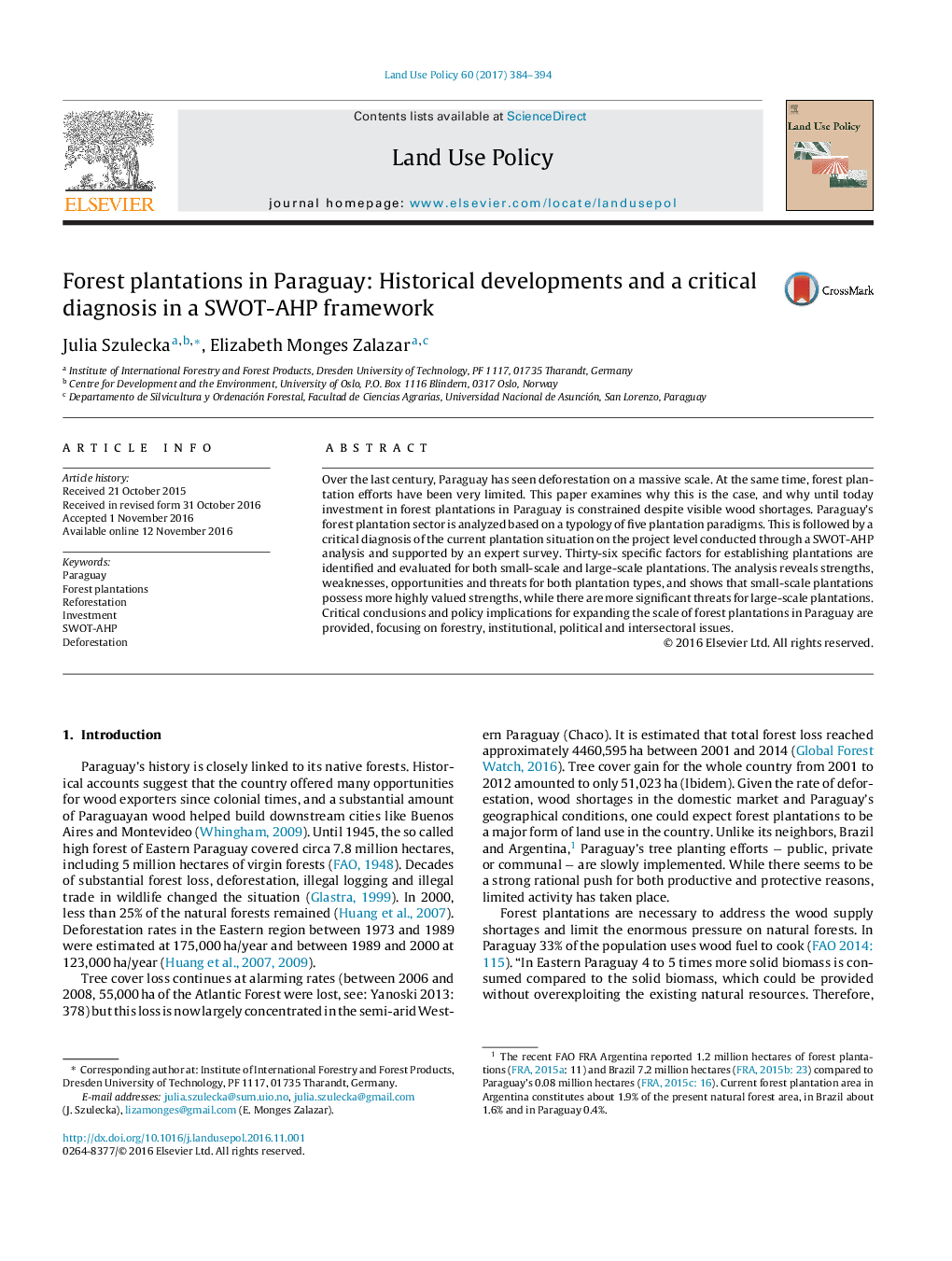| Article ID | Journal | Published Year | Pages | File Type |
|---|---|---|---|---|
| 6461456 | Land Use Policy | 2017 | 11 Pages |
â¢Paraguay faces wood supply shortages and enormous pressure on natural forests.â¢Forest plantations are needed but their development remains slow.â¢Five driving paradigms may be associated with Paraguay's plantation efforts.â¢SWOT-AHP analysis finds 36 factors that influence plantation establishment.â¢Small and large scale plantations have some convergent and divergent SWOT aspects.
Over the last century, Paraguay has seen deforestation on a massive scale. At the same time, forest plantation efforts have been very limited. This paper examines why this is the case, and why until today investment in forest plantations in Paraguay is constrained despite visible wood shortages. Paraguay's forest plantation sector is analyzed based on a typology of five plantation paradigms. This is followed by a critical diagnosis of the current plantation situation on the project level conducted through a SWOT-AHP analysis and supported by an expert survey. Thirty-six specific factors for establishing plantations are identified and evaluated for both small-scale and large-scale plantations. The analysis reveals strengths, weaknesses, opportunities and threats for both plantation types, and shows that small-scale plantations possess more highly valued strengths, while there are more significant threats for large-scale plantations. Critical conclusions and policy implications for expanding the scale of forest plantations in Paraguay are provided, focusing on forestry, institutional, political and intersectoral issues.
